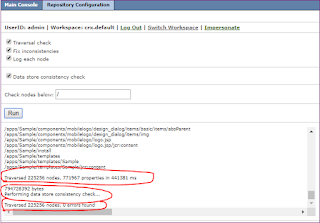- Unlike
Jackrabbit 2, Oak does not index content by default. Custom indexes need
to be created when necessary, much like with traditional relational databases.
- If there is no index for a specific query then
the whole
repository will be traversed. The query will still work but probably
be very slow.
- If Oak
encounters a query without an index, a WARN level log message is printed:
*WARN* Traversed 1000 nodes with
filter Filter(query=select ...) consider creating an index or changing the
query
- Create
custom oak indexes for the all frequently used search queries.
- Create the
custom indexes under the oak:index
node for all search properties that you want to search
- For each
custom Lucene-based index, try to set includedPaths (String[]) setting to
restrict the index to only apply to certain content paths. Then restrict applicable searches to those
paths included by the index.
1. Download the
Jar file of relevent Oak version of AEM server
2. Execute the jar file from terminal/command prompt using below command
java -Xmx1024m -jar qla.jar
1. Example for file at
location
"/adobe/ToolsDailyUsage/cq6/author/crx-quickstart/logs/error.log" the
command is
java -Xmx1024m -jar qla.jar
"/adobe/ToolsDailyUsage/cq6/author/crx-quickstart/logs/error.log"
2. The output of my instance is
shown below
- The Property
Index
- Order Index
- Property
Order Index, The Lucene Full Text Index










